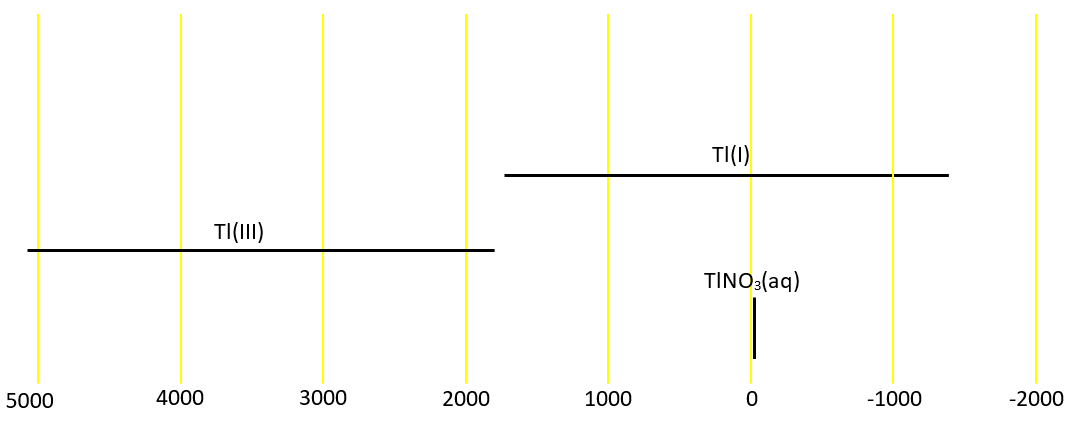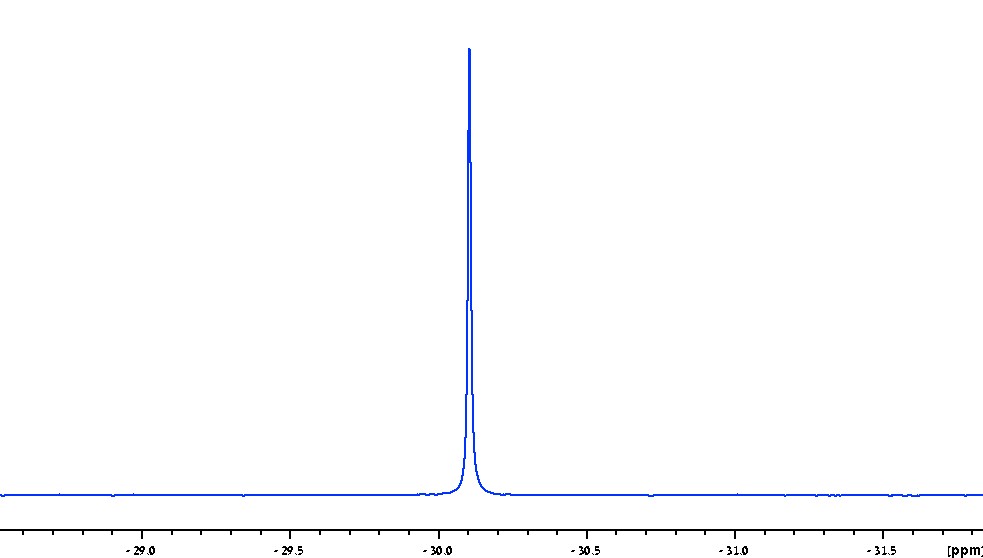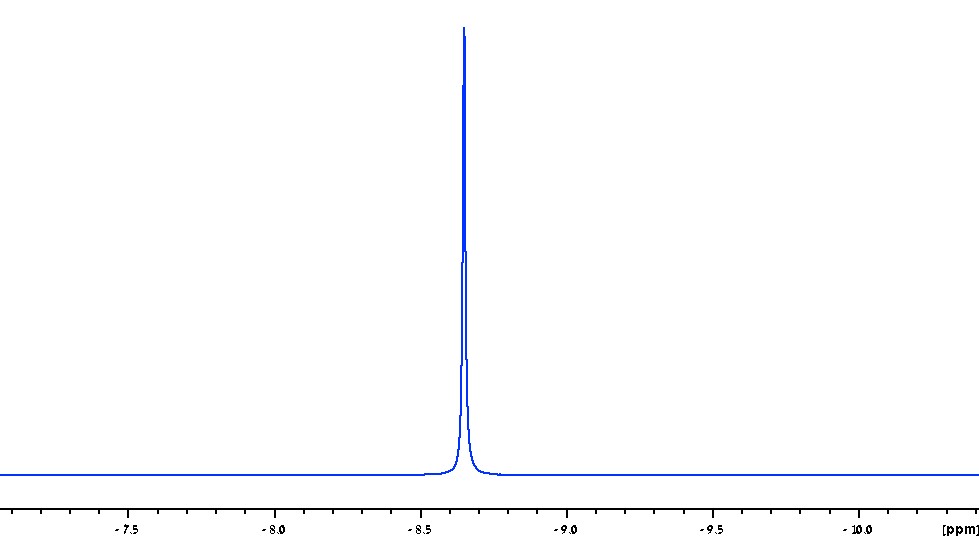(Tl) Thallium NMR
Use our NMR service that provides Tl NMR and many other NMR techniques.
Thallium (Tl) has two high sensitivity NMR active nuclei, 203Tl and 205Tl. 205Tl is more sensitive and yields less broad signals than 203Tl (fig. 1). 205Tl is therefore the preferred thallium nucleus. Both nuclei are spin-half and yield narrow signals in the absence of oxygen. Many thallium salts bind oxygen from the air which typically causes paramagnetic broadenning of 10's of Hz. Thallium has a very wide chemical shift range (Fig. 2). However, thallium resonates at a frequency outside the range of most NMR probes so Thallium is rarely studied by NMR.
Fig. 1. Comparison of 203Tl and 205Tl NMR for TlNO3 in D2O

Fig. 2. Chemical shifts of thallium

203Thallium NMR
203Tl (fig. 3) yields signals that are less sensitive and slightly broader than 205Tl. Therefore 205Tl NMR is the preferred thallium nucleus.
Fig. 3. 203Tl NMR for TlNO3 in D2O

Properties of 203Tl
| Property | Value |
|---|---|
| Spin | 1/2 |
| Natural abundance | 29.52% |
| Chemical shift range | 5300 ppm, from -200 to 5100 |
| Frequency ratio (Ξ) | 57.123200% |
| Reference compound | TlNO3 at infinite diultion in H2O |
| Linewidth of reference | 100 Hz in air |
| T1 of reference | 0.02 s |
| Receptivity rel. to 1H at natural abundance | 0.0579 |
| Receptivity rel. to 1H when enriched | 0.196 |
| Receptivity rel. to 13C at natural abundance | 340 |
| Receptivity rel. to 13C when enriched | 1152 |
205Thallium NMR
205Tl (fig. 4) yields signals that are more sensitive and slightly less broad than 203Tl. Therefore 205Tl NMR is the preferred thallium nucleus.
Fig. 4. 205Tl NMR for
TlNO3 in D2O

Properties of 205Tl
| Property | Value |
|---|---|
| Spin | 1/2 |
| Natural abundance | 70.48% |
| Chemical shift range | 5300 ppm, from -200 to 5100 |
| Frequency ratio (Ξ) | 57.683838% |
| Reference compound | TlNO3 at infinite diultion in H2O |
| Linewidth of reference | 70 Hz in air |
| T1 of reference | 0.03 s |
| Receptivity rel. to 1H at natural abundance | 0.142 |
| Receptivity rel. to 1H when enriched | 0.201 |
| Receptivity rel. to 13C at natural abundance | 836 |
| Receptivity rel. to 13C when enriched | 1186 |
Safety note
Some of the materials mentioned here are very dangerous. Ask a qualified chemist for advice before handling them. Qualified chemists should check the relevant safety literature before handling or giving advice about unfamiliar substances. NMR solvents are toxic and most are flammable. Specifically, thallium and its salts are very toxic.
References
- J. Hinton, "Thallium NMR spectroscopy", Bull. Magn. Reson, 13, 90-108 (1992).